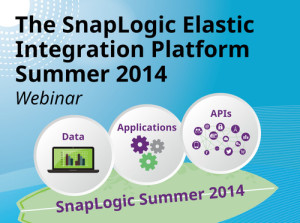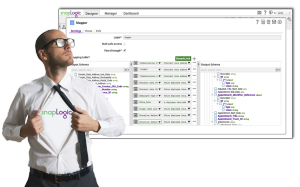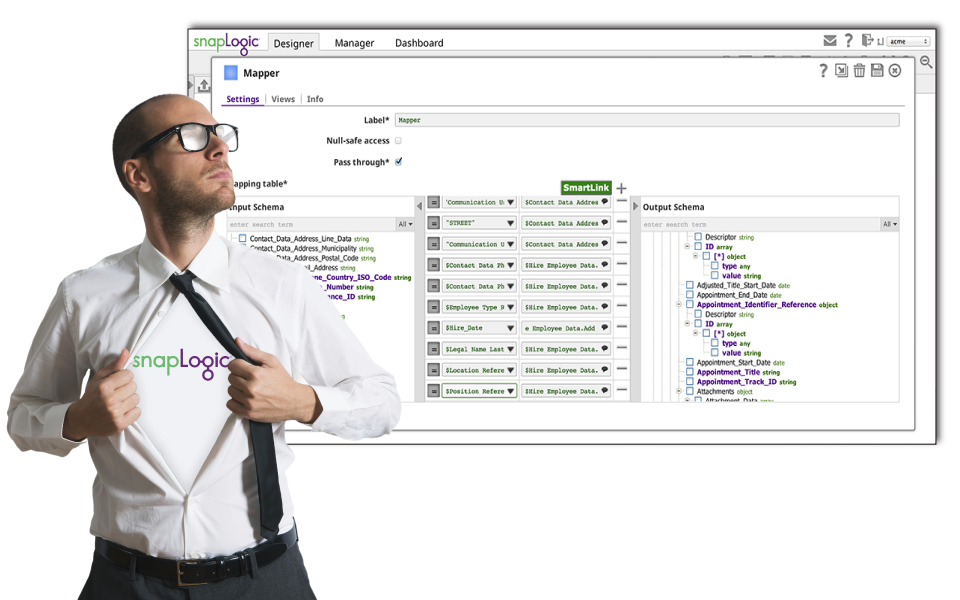 Last week we announced our Summer 2014 Release, focusing on powering the elastic enterprise with a unified integration platform as a service (iPaaS) to connect big data sources, cloud and legacy applications and APIs. This week we hosted a webinar for a more in-depth look at what’s new and how SnapLogic is working with IT organizations to accelerate the “cloudification” of their enterprise application portfolio and drive the adoption of new approaches to analytics and data warehousing. The webinar reviewed the latest features of the SnapLogic Elastic Integration Platform Summer 2014 Release and included a live demo from our product management team. To recap, new features in this release include:
Last week we announced our Summer 2014 Release, focusing on powering the elastic enterprise with a unified integration platform as a service (iPaaS) to connect big data sources, cloud and legacy applications and APIs. This week we hosted a webinar for a more in-depth look at what’s new and how SnapLogic is working with IT organizations to accelerate the “cloudification” of their enterprise application portfolio and drive the adoption of new approaches to analytics and data warehousing. The webinar reviewed the latest features of the SnapLogic Elastic Integration Platform Summer 2014 Release and included a live demo from our product management team. To recap, new features in this release include:
- New dashboards and insights for deeper and broader operational telemetry
- User interface innovations and self learning
- SAML 2.0 single sign on (SSO) support for user management and authentication
- SnapReduce 2.0 to connect the SnapLogic iPaaS to on-premises and cloud-based Hadoop clusters for big data processing
- 20+ new and updated Snaps for all customers
- A new Snap development community for java developers
 To highlight one of these features, the user interface innovations refine and improve our current HTML5, cloud-based Designer for both advanced users and “citizen integrators” who require maximum ease of use and self-service with the introduction of:
To highlight one of these features, the user interface innovations refine and improve our current HTML5, cloud-based Designer for both advanced users and “citizen integrators” who require maximum ease of use and self-service with the introduction of:
- A New Data Mapper (screenshot to the right) for easily creating and managing source and target mappings using a drag-and-drop interface
- A New Expression Editor for creating advances expressions based on functions (array, date and string) and properties
For more details, check out the webinar slides below, view the recording here or check out our What’s New page featuring last week’s press release and more information on each of the new and updated features of the SnapLogic Elastic Integration Platform. And stay tuned for another post coming tomorrow with the July update details, which will include official release dates and what’s available today for SnapLogic customers.









